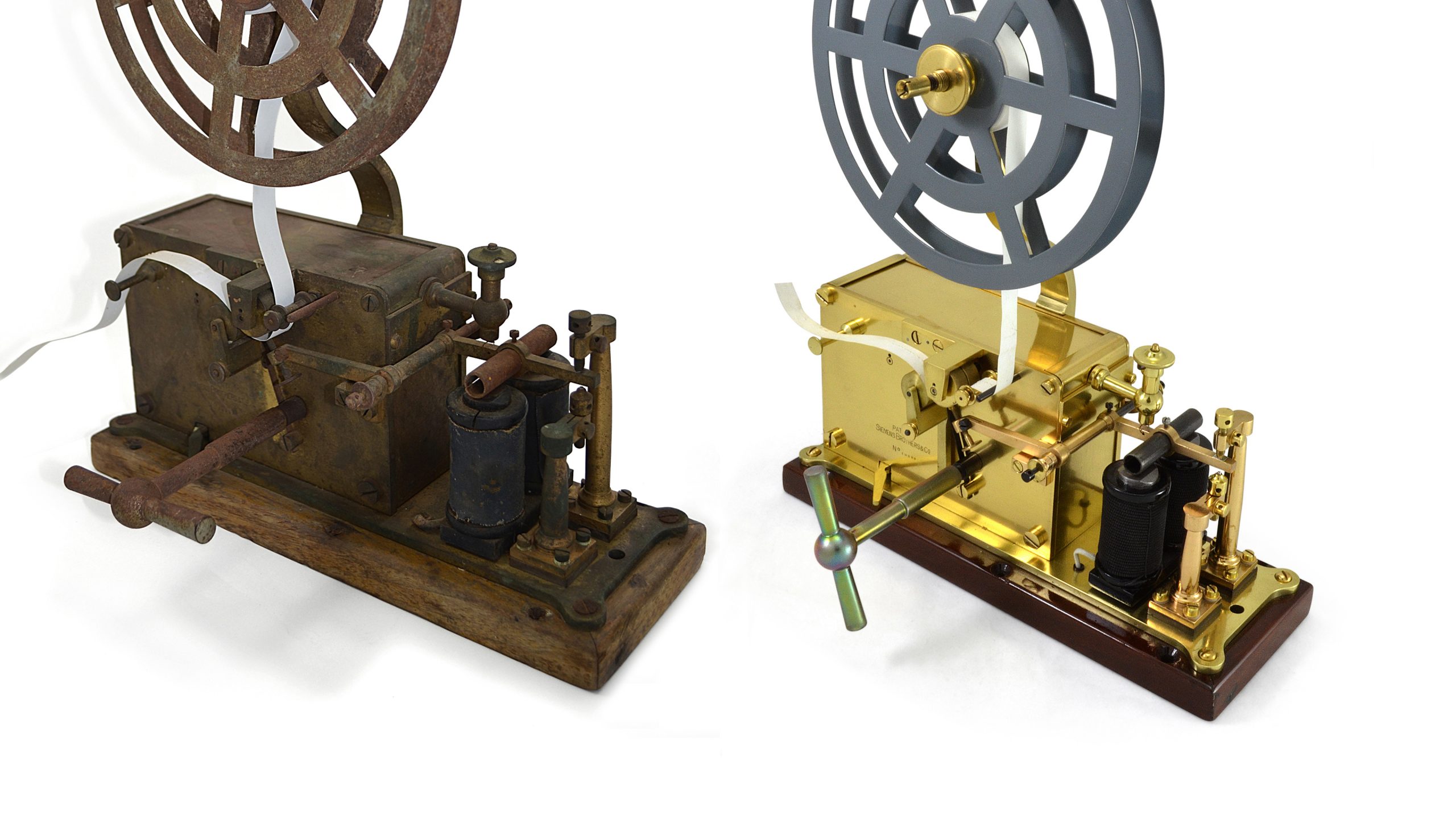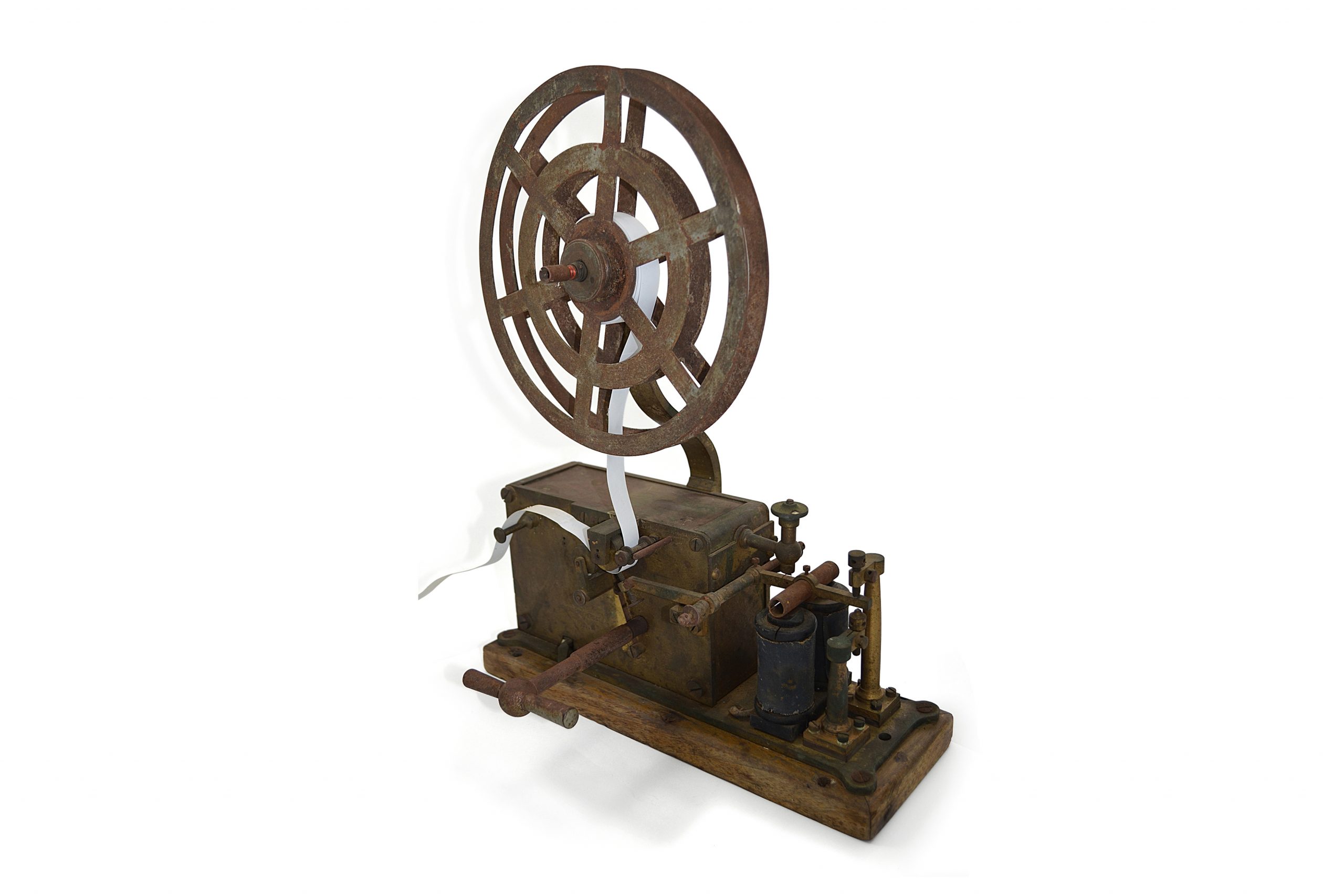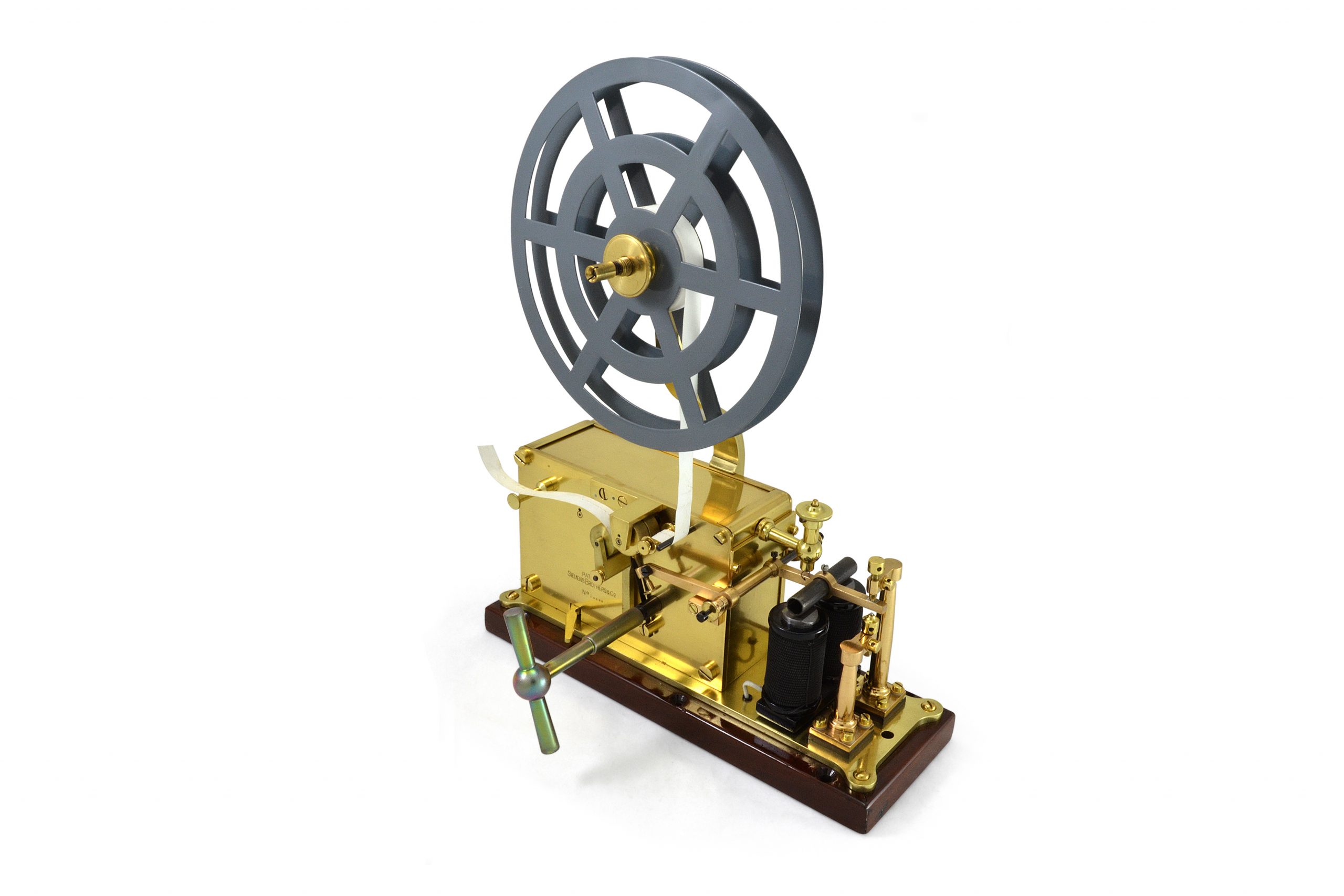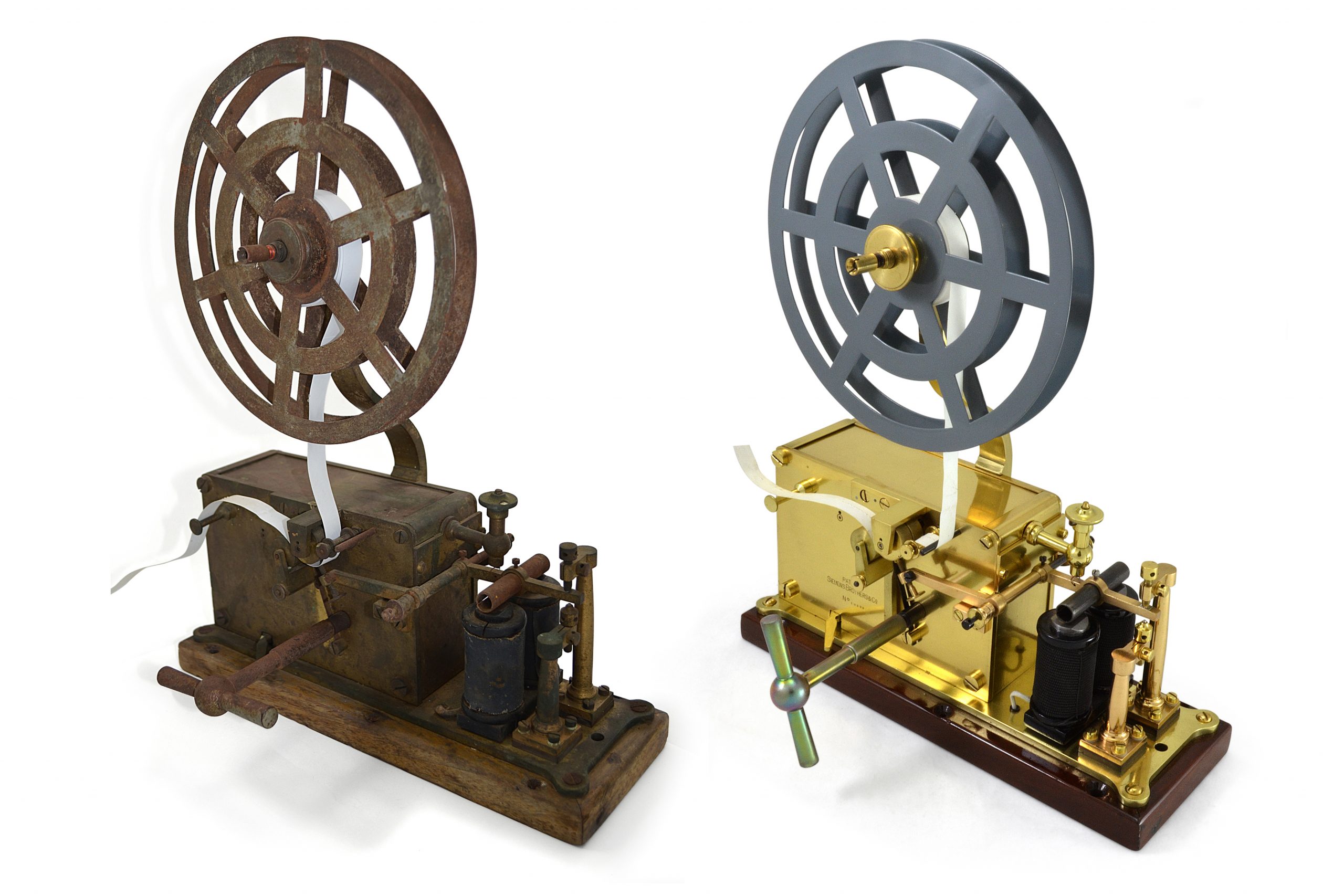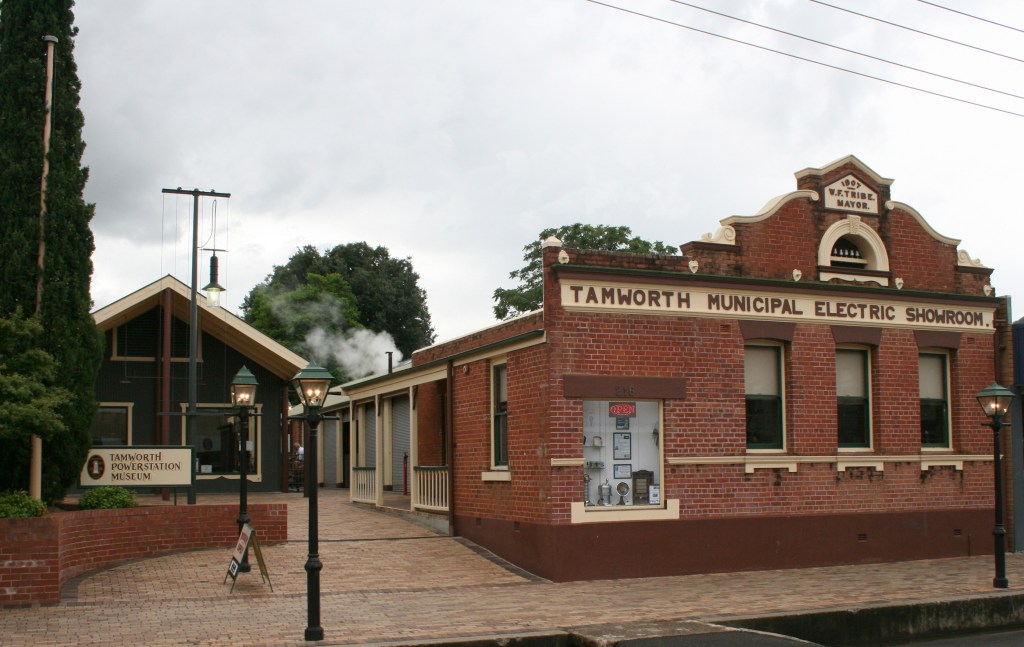Sending Dots and Dashes
Paper Tape Messaging
This machine is a Siemens Telegraph Register. It dates from around the 1850s, no later than 1860. The reason for this date is that this machine records the message onto a paper tape, storing a permanent record of the Morse code message. This was the earliest version of how the messages were received before Alfred Lewis Vail invented the ;sounder’ in 1856. It is the ‘sounder’ type that emitted the sound we now associate with Morse code. As Morse code and the telegraph approaches its 200th birthday, it is easy to forget how this technology transformed the globe.
Used in Lightning Ridge, this machine automatically pressed the dots and dashes of the message onto a roll of paper. The operator then had to translate the paper tape back into its message. The later ‘sounder’ machines were quicker as the operator listened to the sounds and translated the message in real time.
So why was this type of communication so transformational? Before the invention of Morse code, if you wanted to share news with another place, that message had to be physically taken there. Morse code meant those messages could be sent in an instant – so long as there was a telegraph line connecting the destinations.
From the first electric telegraph patents in 1837, the race for telegraph lines to connect the globe was on. The desire for the telegraph was so important, one of the key tasks for the explorers Burke and Wills was to find a possible route for the wires to connect Australia to the undersea cables that had been laid into Asia from London.
During the bushranging era of the 1850s and 60s, telegrams enabled rapid communications between the NSW police as they updated each police station on the latest bushranger activities. When Ned Kelly bailed up the NSW township of Jerilderie in 1879, one of the Kelly gang’s first acts was to cut the telegraph lines. Getting the message out has always been important.
When we now sit at our computers, accessing our emails or information from around the world, a machine like this gives us pause to think about how amazing those first global communications must have been. And to wonder at what sort of news passed through this machine as it operated in a suddenly not so remote Lightning Ridge, all those years ago.


